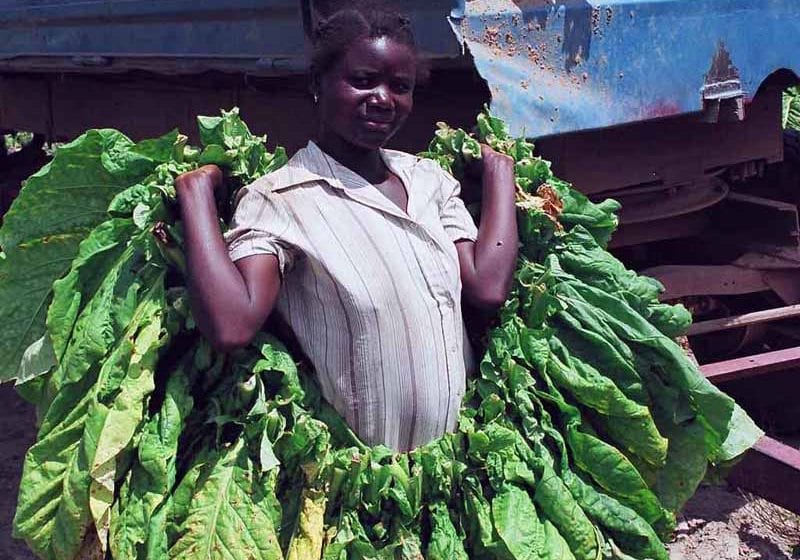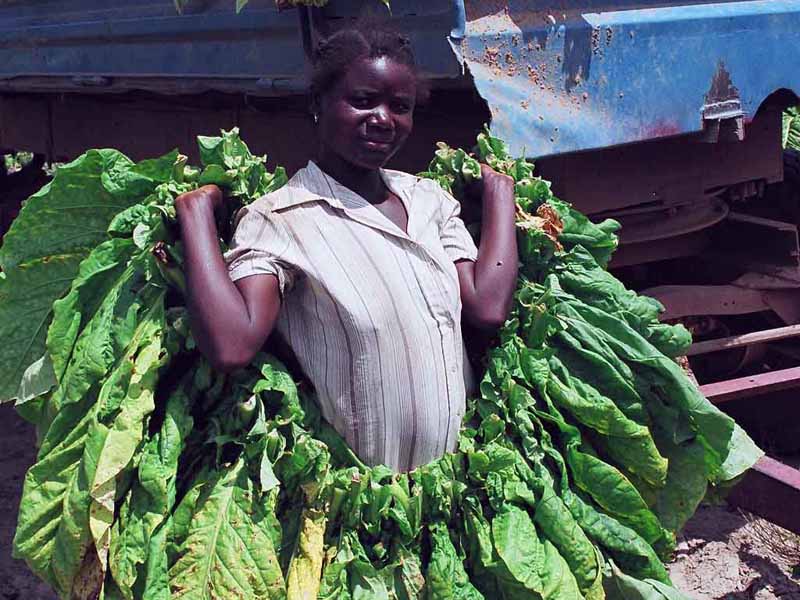Brand ‘Zambia’
- Also in TR Print Edition
- July 1, 2024
- 0
- 11 minutes read


Operating in the shadow of its tobacco powerhouse neighbor, Zimbabwe, Zambia is trying to make a name for itself on the global market.
By George Gay
When researching leaf tobacco production in Zambia, it is almost de rigueur to seek an answer to the question of why the country grows a Virginia flue-cured crop only about one-eighth the size of that produced by its neighbor Zimbabwe. After all, Zimbabwe has a land mass only about 50 percent of that of Zambia, and the populations of the two countries are comparable.
One of the answers normally given to this question is that tobacco has been prioritized in Zimbabwe because it is a hugely important contributor to the country’s GDP and foreign exchange earnings whereas it has been less important in Zambia, where mining plays a dominant role. Of course, this explanation seems to beg the question since both countries are rich in minerals and both have soils and climates ideal for growing tobacco, but that doesn’t mean the explanation is wrong. Presumably, sometime in the past, those who took control of the region of Africa now made up of Zambia and Zimbabwe decided, for whatever reasons, on where they should prioritize mining and agriculture, and those priorities remain in force today because change, even if desirable, is sometimes impossible or at least difficult to bring about.
Decades ago, a tobacco grower of my acquaintance told me that Zambia struggled to attract international tobacco buyers who, after spending months in Zimbabwe each year, were reluctant to move on to Zambia to buy what was then a small crop, and without the prospect of a significant number of buyers showing up, there was no viable way of increasing the size of the crop and attracting more buyers …. If it wasn’t a catch-22 situation, it was close to it.

Limits to Production

Ironically, when significant change did come about in Zambia, it came in the form of a boost from Zimbabwe. Zambia’s current level of tobacco production can be traced back to the 2002–2003 season and the arrival of Zimbabwean growers whose land had been taken from them under compulsory acquisition policies brought in from 2000 under former President Robert Mugabe’s land redistribution policies. From that point on, apart from a hiccup that occurred about 10 years ago, production increased steadily.
And contrary to the impression that might have been given above, tobacco comprises an important business in Zambia, which produces flavorful flue-cured and burley between September and April in its southern, eastern and central provinces, about 70 percent of it rain-fed and 30 percent under irrigation. It is clearly important in rural areas and, also, less obviously, in urban areas, in part because it helps to reduce population drift to the cities. Tobacco is produced by about 24,000 growers, and about 270,000 people depend on its production for their livelihoods. Most of its leaf is processed locally by Tombwe Processing and exported, mainly to China and Japan, for use in cigarette manufacture, earning much-needed foreign exchange.
But having made the case for the importance of tobacco, it must be said that unless something unexpected occurs, it is unlikely that Zambia will in the future significantly increase the size of its tobacco crops from their current annual levels of about 30 million kg of flue-cured and 8 million kg of Burley. And here, at least, the reasons are not difficult to discern.
Albert van Wyk, a Zambian tobacco grower for 40 years and the general manager of the Tobacco Association of Zambia (TAZ), told me during a telephone conversation in April that “compliance,” specifically its environmental aspects, limited the amount by which the tobacco crop could be expanded. To comply with buyer and manufacturer requirements, it was necessary for growers to maintain sustainable woodlots to produce the fuel they needed for curing, and these currently could only just keep abreast of current production; they could not be expanded easily and quickly to allow for a major increase in production. The only other option would be to move to using coal for curing additional flue-cured, but coal, which is produced in Zambia, raises its own environmental concerns, is relatively expensive, and its use might be phased out soon.
The TAZ clearly takes seriously issues of compliance, which go far beyond the maintenance of woodlots, and van Wyk told me that the industry, which is fully private, liked to think of itself as self-regulating within the laws of the land. Currently, it was trying to establish “Brand Zambia” in the market, something that would put it ahead of Malawi and Zimbabwe. In fact, not only is tobacco production self-regulating in Zambia, but it is also self-propagating. Perhaps reflecting the relatively lowly status of tobacco growing in the country, there is no facility to train growers, so it keeps going on an informal apprenticeship scheme whereby established growers teach and mentor younger growers, as well as farm hands, who need to be skilled.

Compliance
So far, in talking about why it is unlikely that production will increase significantly in Zambia, I have ignored the elephants in the room—grower tobacco prices, efficiencies and profitability, which these days are connected to “compliance” because compliance, in all its guises, doesn’t come cheaply. Generally, prices on Zambia’s tobacco market, which runs from April to August and which are based on contracts, are not at a level to inspire major production increases.
Having said that, this year’s crops are of good quality and are short in a year when all the major flue-cured and burley producer countries have come up with smaller-than-expected quantities of these types, so prices are likely to be better. In fact, van Wyk, who was in the process of selling his tobacco when I spoke with him, said that Zambia’s growers were expecting increases of $0.40 per kilogram and hoping for $0.80 per kilogram. “In a year of a shortage, I think things have to shift,” he said. “If they aren’t going to shift now, when will they shift?”
Nevertheless, van Wyk is nothing if not practical, and he acknowledges that even though prices might not be as high as growers would like them to be, tobacco is still a better value crop than others. Tobacco, he said, would pay a grower’s medical bills and school fees and on a community-wide basis allow the building of schools and other social facilities. And in this sense, he is politely dismissive of the representatives of nongovernmental organizations who show up from time to time promoting moves away from tobacco and into other crops and business activities. And it is not hard to see his point. Tobacco growers such as van Wyk didn’t come down with the last shower of rain; they have been around for a long time. During their careers, they, like the rest of us, will have been looking for ways to make more money by doing less. They will have been down these other avenues, so the fact that they are still in tobacco tells its own story.
Sealed Systems
Van Wyk is politely dismissive, too, of the sorts of generational smoking bans being debated in the U.K. and discussed elsewhere. He sees such bans as playing a part in shifting the tobacco business from what he calls the honest trade to the dishonest trade. Again, it is easy to see his point and, indeed, wonder whether the problem doesn’t run deeper than he suggested. Is this just a demand issue or a supply issue also? Is the line in the sand between the honest and the dishonest trade maintained even if noncompliant tobacco is available in a year such as this, when there is a shortage of the main cigarette tobacco types? Is there no crossover? It seems difficult to imagine that there are two sealed systems working alongside each other—one involving sustainably grown compliant tobacco sold through proper channels and used in licit manufacture and the other comprising noncompliant tobacco grown unsustainably, sold through opaque channels and winding up with illicit manufacturers.
The reason why this question must be asked goes back to the fact that Zambian growers are hoping for good prices this year but are not sure of them. Why not? If the two closed systems described above were in operation, prices would be bound to rise in a year of shortage, especially since licit manufacturers do not keep stocks as big as once was the case. The fact that higher prices are not guaranteed seems to suggest that there is some crossover—that noncompliant tobacco enters the mainstream, something that would clearly put downward pressure on prices—as well as call into question the very idea of compliance, sustainability and traceability.
Of course, the above comprises just hypothetical questions, but it is worth giving some thought to them because there is another reason why the trade in noncompliant leaf might be more invasive than otherwise imagined—the permeability of some borders. Recently, people in the U.K. and some other countries have had to consider more closely than in the past the legacies left behind by colonialism. As you would expect, the reactions to such reflections have varied, at least in the U.K., but only the willfully obdurate cling to the claim that there have been no negative outcomes. Some of these outcomes are now widely discussed, though, often, the underlying reasons for them are not: for instance, the “creation” of African nations by the drawing by non-Indigenous people of boundaries seemingly heedless of the historical understandings and sensitivities of the way in which Indigenous people ordered their lives. And, certainly, this seems to be the case with Zambia, which has borders with eight countries, including Malawi, Tanzania and Zimbabwe. Given the circumstances under which these borders were decided upon, I would be reluctant to use the word “smuggling” when talking about some of the cross-border movement of leaf tobacco; perhaps “osmosis” would be a better word.

